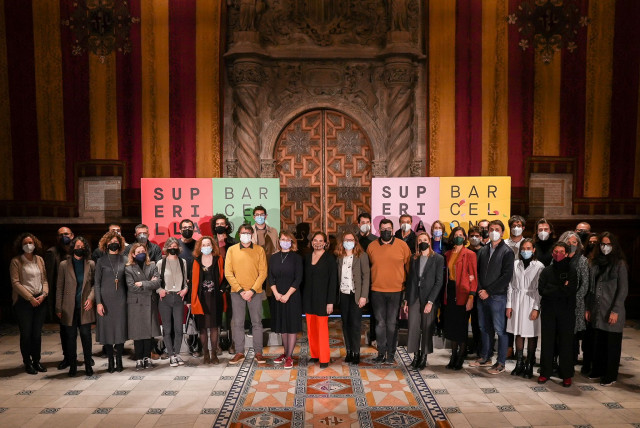Citizen Implementation of Sustainable Urban-Design Superilles (Superblocks) in Barcelona

-
W Europe, Barcelona, Spain, Offline+Online
- Where did this use case occur?
-
2013-ongoing
- When did this use case occur?
-
Government of Barcelona
- Who were some of the key collaborators
-
Thousands of citizens, to represent Barcelona (1.62M pop)
- How many people participated?
-
Land/landscape, Municipality, Urban
- What are some keywords?
What was the problem?
Many modern cities are designed for cars making them loud, unsafe for pedestrians and bicyclists, as well as unsustainable. In 2014, the city of Barcelona was faced with serious air pollution problems and consistently failed to meet the EU’s air quality targets which was causing up to 3,500 premature deaths per year.
How does the community approach the problem?
As part of the 2013-2018 Urban Mobility Plan of Barcelona, the city introduced the Superilles: a government-funded project identifying 120+ intersections to convert to ‘Superblocks’, which are 400 x 400 m units (bigger than a block, yet smaller than a whole neighborhood). The urban design concept aims to recover space for the community, improve biodiversity, move towards sustainable mobility, and encourage social cohesion. [1] Public participation has been part of the design and implementation of the Superilles since the beginning with involvement from local residents, businesses, and associations. Participation is open to anyone interested through a variety of methods including: meetings and information sessions with citizens and other stakeholders, participatory workshops and mapping exercises, neighborhood “exploratory marches” and public walks, street events, and online deliberations, proposal systems, and polling made possible by the virtual platform, Decidim. The designers seem to be taking their listening and learnings from every Superblock transformation process onto the next one, striving for “maximum possible consensus.” Beginning in 2022, moving from east to west, the urban designers want to remodel 21 streets by 2030. The 2024 Urban Mobility Plan only fuels the city’s vision of creating 503 superblocks throughout the city in the future.
• Collaboration on a public space criteria document and citizen participation in the preliminary designs for axes and squares on various streets (i.e. Consell de Cent, Rocafort, Compte Borrell and Girona streets).
• Street events, “exploratory marches”/ public walks, nocturnal exploratory march, “public space model and diagnosis workshop”
• Collaborative mapping tool [2]
What were the results?
• A study of Gracia before and after the superblocks found that foot travel in the area increased by 10 percent and bicycle traffic by 30 percent, while vehicle traffic declined by 26 percent in interior streets. [3]
• Since 2016, the city has rolled out pilot projects in six neighbourhoods with adequate intervals in between to better refine the public participation process. [4]
• In 2018, a magazine article for La Pinya mentioned that the Barcelona had only 0.6% of green spaces, but in 2019 The Barcelona City Council suggested the number of communal space under green parks and gardens went up to 11%. [5]
How participatory was it?
Collaborate
The participatory processes enabled by Decidim were used by the city and urban planners to collaborate with the people and businesses that make up neighborhoods on the Superilles project.
What makes this Use Case unique?
'This use case demonstrates how a city government can creatively mobilize citizen engagement in a diversity of ways to get stakeholders of all ages involved in the re-design of their shared urban environment.' -Val